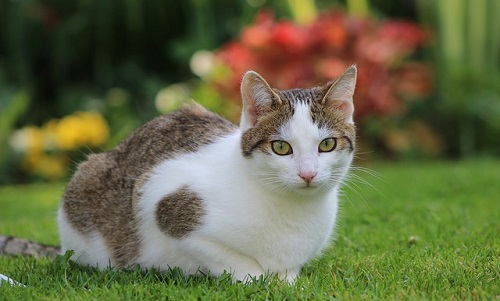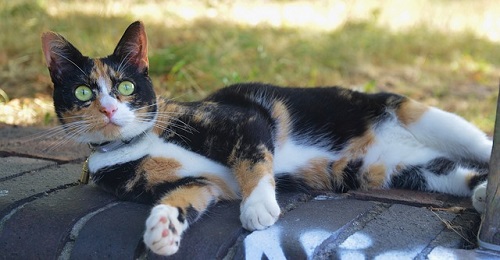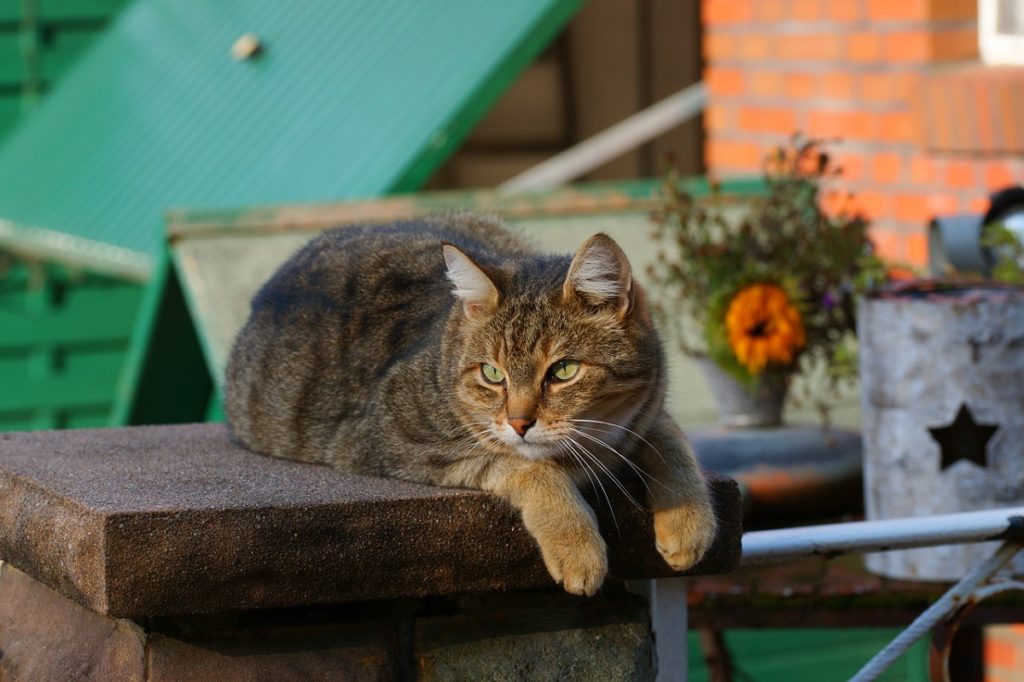Houseplants – they’re great elements that can really turn your house into a home. However, they are enticing to cats. Your curious kitties may enjoy batting at the blossoms, digging into the soil, chewing the leaves, or even drinking from the rooting jar. It’s for these reasons you should ensure your household plants are safe for cats. Garden centers may sell an array of plants, but some are toxic to animals. It’s important to be able to quickly identify those that are non-toxic and safe for your cats to explore. This article will provide you with all the information you need to choose the right houseplants that are safe for your furry friends!
Indoor Houseplants Safe For Cats
In general, foliage plants with low light requirements are non-toxic and can provide lush greenery to your home. Parlor palms are a great example of this type of plant. Prayer plants are also non-toxic, available in an array of colors and blossom with colorful pink and green foliage.
Flowering plants are also popular among households, several of which are non-toxic and safe for your cat. Try a beautiful African violet or a pot of mini roses! These can bloom for long periods of time. Mini-zinnias and gerbera daisies are also cat-safe. These blossoms thrive next to sunny windows and provide long-lasting flowers in many different colors.
 Interested in a hanging plant? These can often be quite intriguing for your furry felines as well. Those droopy branches can be a lot of fun for your cat to play with. If you prefer these types of plants, try hanging a Christmas cactus or a spider plant – they’re non-toxic and look fantastic! If a fresh cut bouquet is more your style, snapdragons, sunflowers and lavender fit the bill to perfection.
Interested in a hanging plant? These can often be quite intriguing for your furry felines as well. Those droopy branches can be a lot of fun for your cat to play with. If you prefer these types of plants, try hanging a Christmas cactus or a spider plant – they’re non-toxic and look fantastic! If a fresh cut bouquet is more your style, snapdragons, sunflowers and lavender fit the bill to perfection.
The List Of Houseplants Safe For Cats
To make life easier for you, here’s a list of some of the best cat-safe houseplants. While there are several, these are some of the favorites:
Spider Plant: Again, these plants are great for hanging. They’re sturdy, safe, and easy to maintain and cultivate. Plus, they bring an added benefit of providing a healing and decorative elegance to your home.
African Violet: The African violet is a great way to add a splash of color to your home. Place it by the window and enjoy its beauty year-round – this goes for you and your cat!
Palms: There are several different varieties of cat-friendly palms. Most are easy to maintain and some provide a nice form of natural purification.
Money Trees: Money Trees are super cat-friendly and also work to purify toxins in the air. Oh, and did we mention they’re also known to bring luck and prosperity? Cha-ching!
Ferns: How about a fern? Varieties like the Boston fern can act as a natural humidifier while the bird’s nest fern can thrive with minimal sunlight and only needs water once a week – nice, easy, and of course non-toxic!
Cast Iron: Cast iron plants are beautiful to look at and they’re very tough – they can thrive under just about any condition. They’re native to the forest floors in Japan and Taiwan, which means they require little sunlight. This means you can have peace of mind while your cat is “roaming the jungles” of your living room.
Tradescantia Zebrina: If you haven’t heard of these, we suggest you look into them. Their leaves are known to grow into a lavish display of purple making them perfect to hang or place on end tables. Not to mention, your cat can enjoy rubbing up against their soft curly leaves without suffering from any type of reaction.
Toxic Houseplants
Some common plants which can be toxic to cats include:
- Amaryllis
- Yew
- Autumn Crocus
- Tulips
- Azaleas and Rhododendrons
- Spanish Thyme
- Castor Beans
- Sago Palm
- Chrysanthemum
- Pothos
- Cyclamen
- Oleander
- English Ivy
- Lilies
- Kalanchoe
 If your cat does come in contact with or ingest a toxic plant it’s important to seek care from a veterinarian ASAP. Lookout for the common signs of poisoning in cats. It may be common to see redness, swelling, and itchiness around the mouth. If the plant’s toxicity level is high or if your cat is particularly vulnerable, it may impact the organs. If this is the case, you may also notice:
If your cat does come in contact with or ingest a toxic plant it’s important to seek care from a veterinarian ASAP. Lookout for the common signs of poisoning in cats. It may be common to see redness, swelling, and itchiness around the mouth. If the plant’s toxicity level is high or if your cat is particularly vulnerable, it may impact the organs. If this is the case, you may also notice:
At the end of the day, we know houseplants add a pleasant, fresh touch to any home, but it’s important to consider how these plants affect your cats too. Next time your shopping for some new flora for your home, check out some of these cat-friendly recommendations. And remember, if you think your cat has been exposed to a poisonous plant or is exhibiting any of these symptoms, consult your veterinarian immediately.
Sources:
“20 Plants That Are Safe for Children, Cats and Dogs.” HGTV.ca, Accessed 29 Oct. 2018. www.hgtv.ca/green-living/photos/plants-child-pet-safe-1913786/.
Becker, Marty. “10 Household Plants That Are Dangerous to Dogs and Cats.” Vetstreet, Accessed 29 Oct. 2018. www.vetstreet.com/learn/10-household-plants-that-are-dangerous-to-dogs-and-cats.
Harris, Rob. “Indoor Plants That Are Safe for Cats.” The Nest, 14 July 2016, Accessed 29 Oct. 2018. www.pets.thenest.com/indoor-plants-safe-cats-4074.html.




